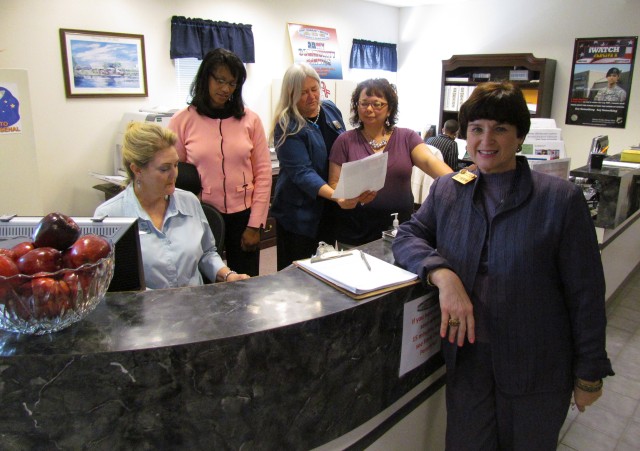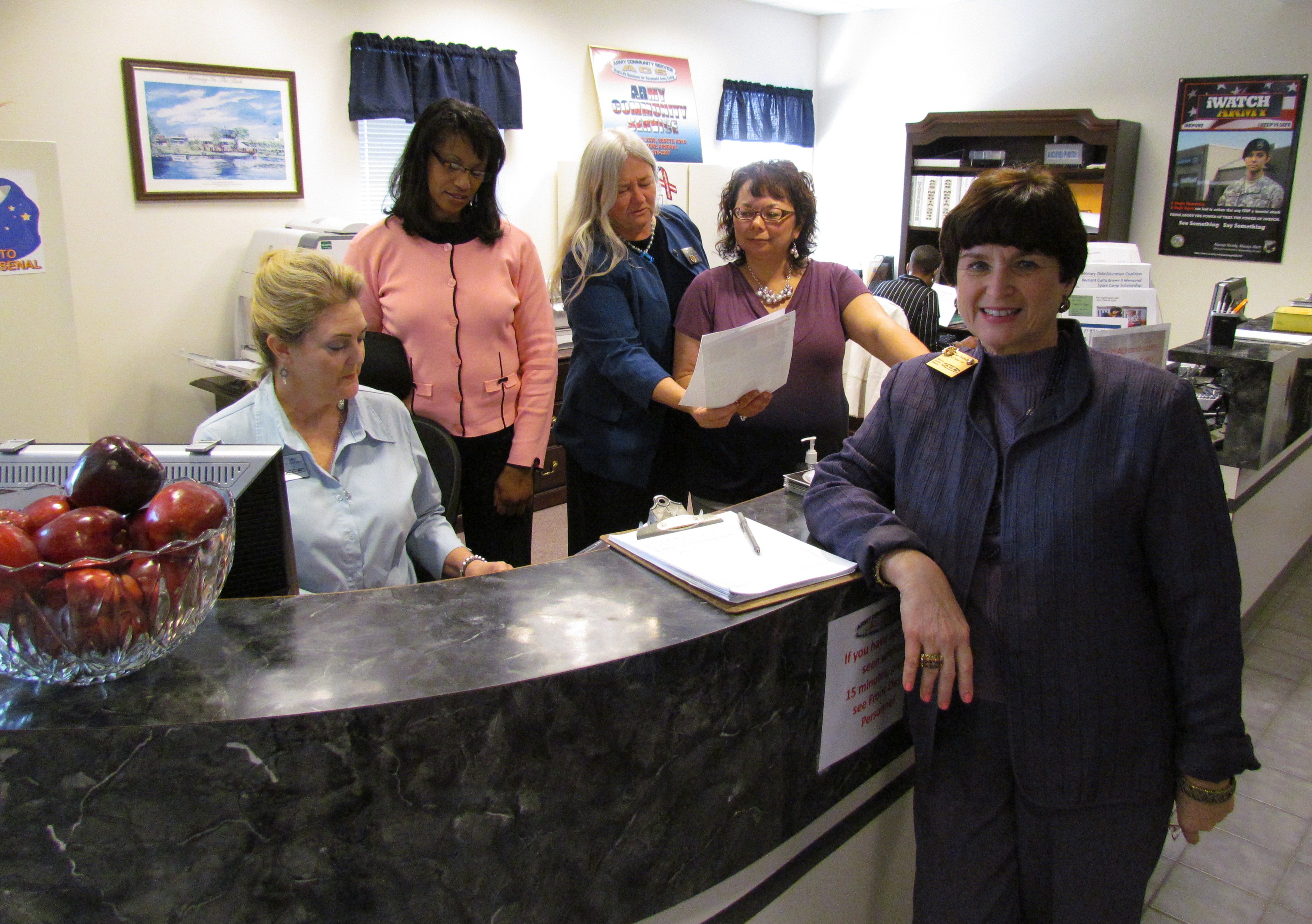
REDSTONE ARSENAL, Ala. -- Redstone Arsenal is among 22 Army installations that have been chosen as a pilot site for enhanced delivery of services provided by Army Community Service that will make it easier and faster for Soldiers and their family members to get the help they are seeking.
The pilot program, which began in February and continues through March 31, is the first step in an initiative that will transform ACS as directed by the Office of the Assistant Chief of Staff of Installation Management. If lessons learned from the pilot program prove to be successful, the transformation of ACS will be implemented at every installation.
"The results of this pilot will assist in determining the template for transformation," Sue Paddock, director of Redstone's ACS, said. "With that transformation, there will be no change in services. The change will be in the delivery of those services."
At the end of the pilot program, each of the 22 ACS organizations involved will identify successes, challenges, the impact on service delivery, measurable targets and the resources needed to support the transformation.
"The pilot will assist in developing a solid process for transformation," Paddock said. "The staff here is excited. The Redstone ACS was the first in (year) 2000 to pass the Department of the Army accreditation and we've taken the lead every three years to be reaccredited. We look at this as just another challenge for us to take the lead on. If there are going be changes made and new challenges and opportunities for us, then we want to be in the lead on that."
The ACS transformation is the result of input received from about 450 garrison focus groups and surveys involving Soldiers and family members that were coordinated during installation visits by Installation Management Command commander Lt. Gen. Rick Lynch in 2009 and 2010, following his assumption of the command.
There are 83 ACS centers throughout the Army with programs that include Army Family Action Plan, Army Family Team Building, Army OneSource, Army Volunteer Corps, Exceptional Family Member, Family Advocacy, Financial Readiness, Information and Referral, Relocation Readiness, Sexual Assault and Response Program, Soldier and Family Assistance Center, Spouse Employment, Survivor Outreach Services, Transitional Compensation, and Victim Advocacy.
Redstone's selection as a pilot site puts it in a good position to provide transformation input that will be unique to the Army, Paddock said. With a diminishing Soldier corps on post, and a large and increasing civilian work force, the services that Redstone's ACS provides reach beyond the traditional Soldier and their family.
"The services we provide support Soldier and family resiliency," Paddock said. "And we also support retirees, Department of the Army civilians, contractors and their families."
There are several organizations, resources and services available to Soldiers, Army civilians and their families. Such a large variety of assistance can make it difficult to determine which assistance is the best choice.
"It can become confusing when there are so many programs and services to choose from," Paddock said. "Lt. Gen. Lynch wants to establish ACS as the central location for all services. The original intent of ACS is prevention and education. However, referrals are necessary when the extent of the concern or problem requires additional assistance. Bottom line, ACS serves as the front line."
It is hoped that by making ACS a central location for services, those services will be delivered faster and easier, and at less costs.
"Duplication of services costs the Department of the Army and the Department of Defense unnecessary funds, which can be cut if ACS surfaces as the community integrator," Paddock said. "The only way to do this is to focus on ACS and improve ACS's visibility.
"And, by making ACS the community integrator, Army leadership will have immediate knowledge of Soldier, civilian and family concerns. This will improve resiliency. Therefore, transformation will effectively eliminate duplication of services and establish a central location or point of contact where all can come for assistance. This will eventually cut costs and improve efficiency."
The ACS director feels staffing will become one of the main challenges of the transformation. Limited ACS staffs are now providing numerous services. The transformation is sure to increase demand for those services, Paddock said.
The transformation will also pull ACS out of the Family and Morale Welfare and Recreation organizational chart and make it a direct reporting organization to Garrison commanders.
"We've always had a really strong relationship with FMWR and we are supported by FMWR in many ways," Paddock said. "We've been told that support will continue."
Besides faster service delivery, the Armywide ACS transformation, if launched in October, will also involve introducing an upgraded tracking system that allows staff to follow up with clients more efficiently and to ensure client needs are met when service is provided; and ACS satellite locations at units, garrison exchanges and commissaries, and off-post sites.
Besides Redstone, other installations participating in the pilot program are: Fort Carson, Colo.; Natick, Mass.; Fort Jackson, S.C.; Fort Stewart, Ga.; Fort Leavenworth, Kan.; Fort Leonard Wood, Mo.; Detroit Arsenal, Mich.; Picatinny Arsenal, N.J.; Rock Island Arsenal, Ill.; Joint Base Lewis-McChord, Wash.; White Sands Missile Range, N.M.; Fort Huachuca, Ariz.; Fort Lee, Va.; Joint Base Langley-Eustis, Va.; Brussels, Belgium; Baumholder, Grafenwoehr; Kaiserslautern, Germany; Vicenza, Italy; and Daegu, Korea.

Social Sharing